Ray Optics and Optical Instruments : Notes and Study Materials -pdf
- Concepts of Ray Optics and Optical Instruments
- Ray Optics and Optical Instruments Master File : Reflection and Refraction
- Ray Optics and Optical Instruments Master File : Optical Instruments
- Ncert Solution
- Important Questions Ray Optics and Optical Instruments
- NCERT Exemplar Solution
- Past Many Years CBSE Questions and Answer: optical instruments
- Past Many Years CBSE Questions and Answer: Reflection Refraction
- Test Paper 1
- Test Paper 2
Introduction
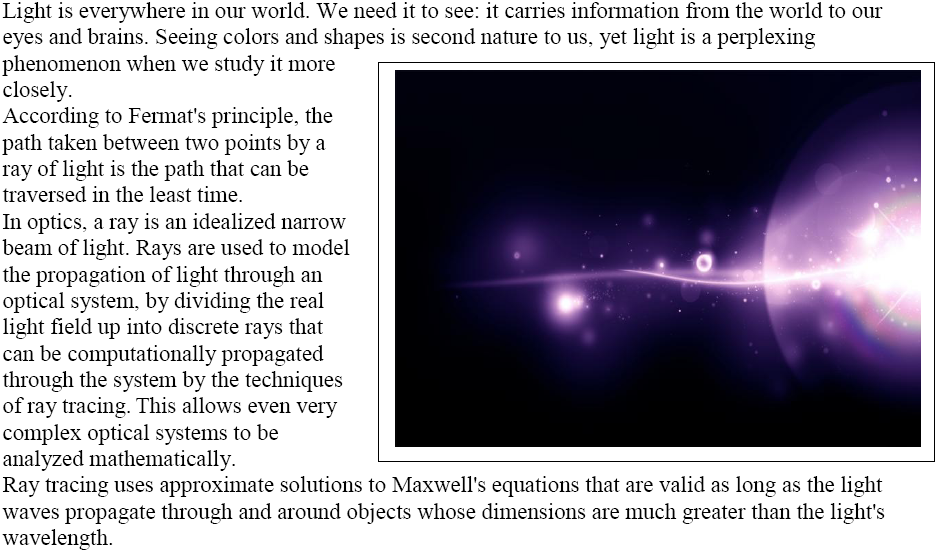
Physics Notes on Semicoductor Electronics
Reflection of Light & Spherical Mirrors: Basic Terms
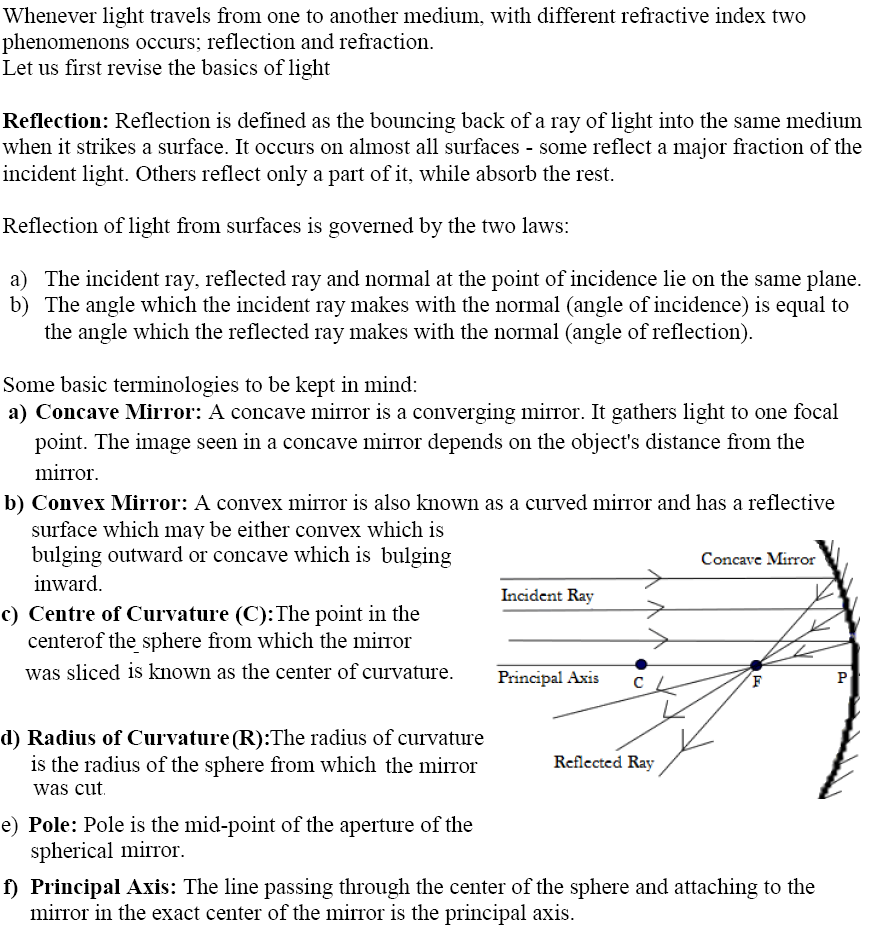
New Cartesian Sign Convention

Mirror Equation

Refraction of Light & Snell’s Law
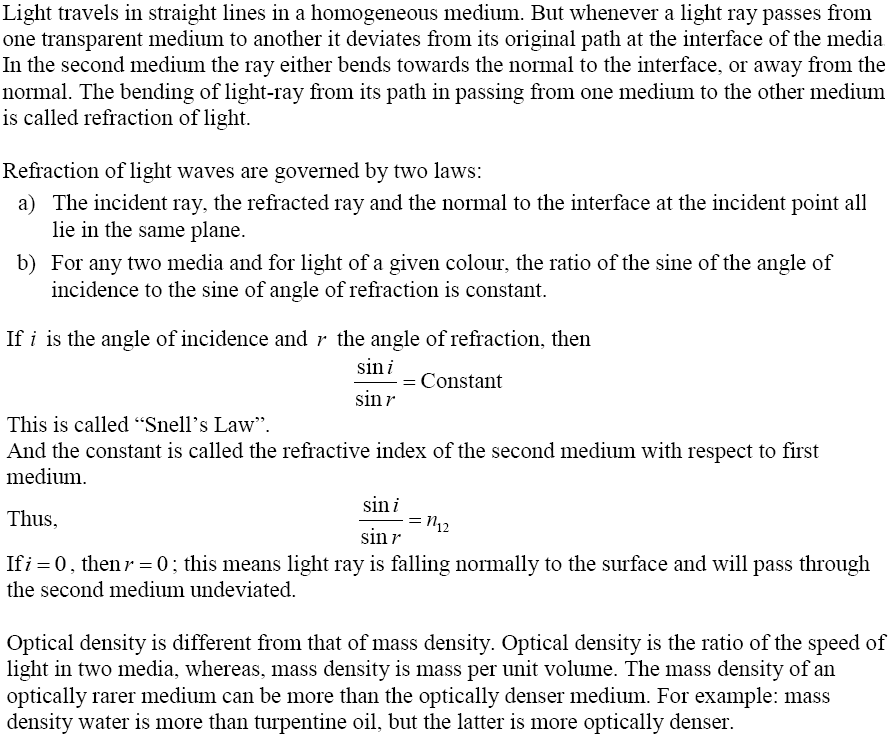
Lateral Shift

Real and Apparent Depth

Apparent Position of the Sun
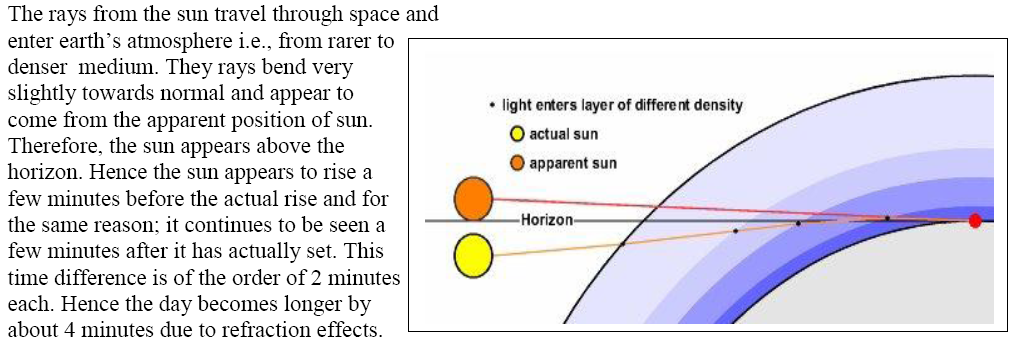
Total Internal Reflection

Critical Angle
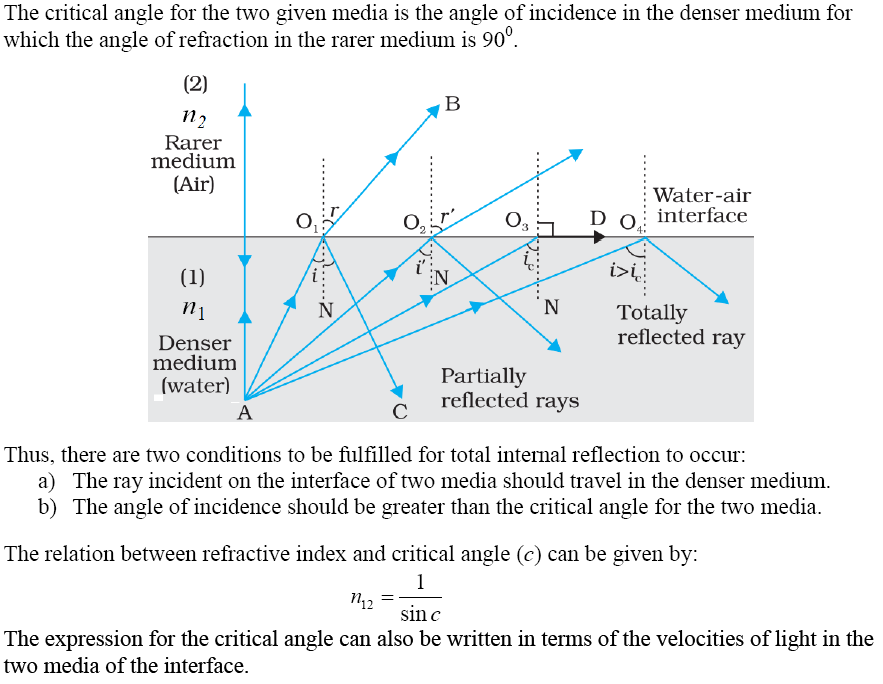
Application of Total Internal Reflection
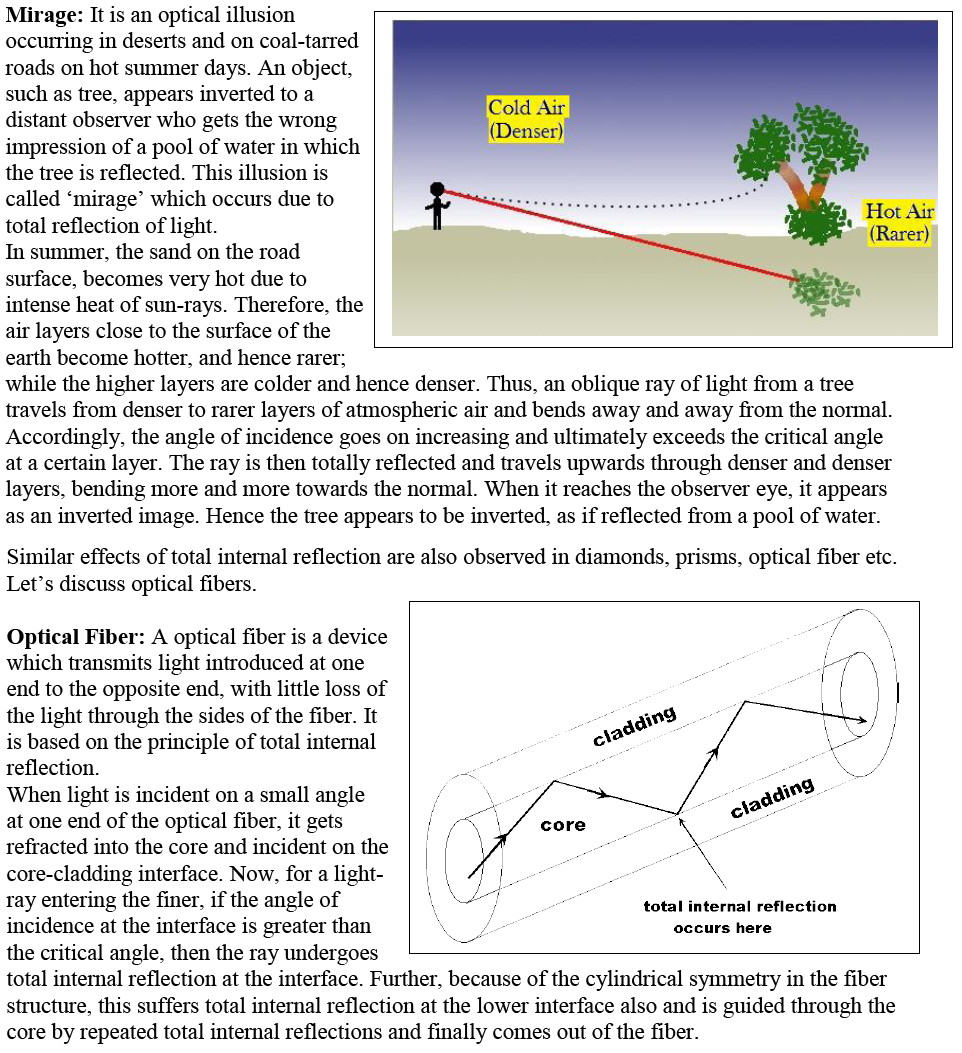
Refraction by Spherical Surfaces

Refraction by Lenses & Lens Maker’s Formula
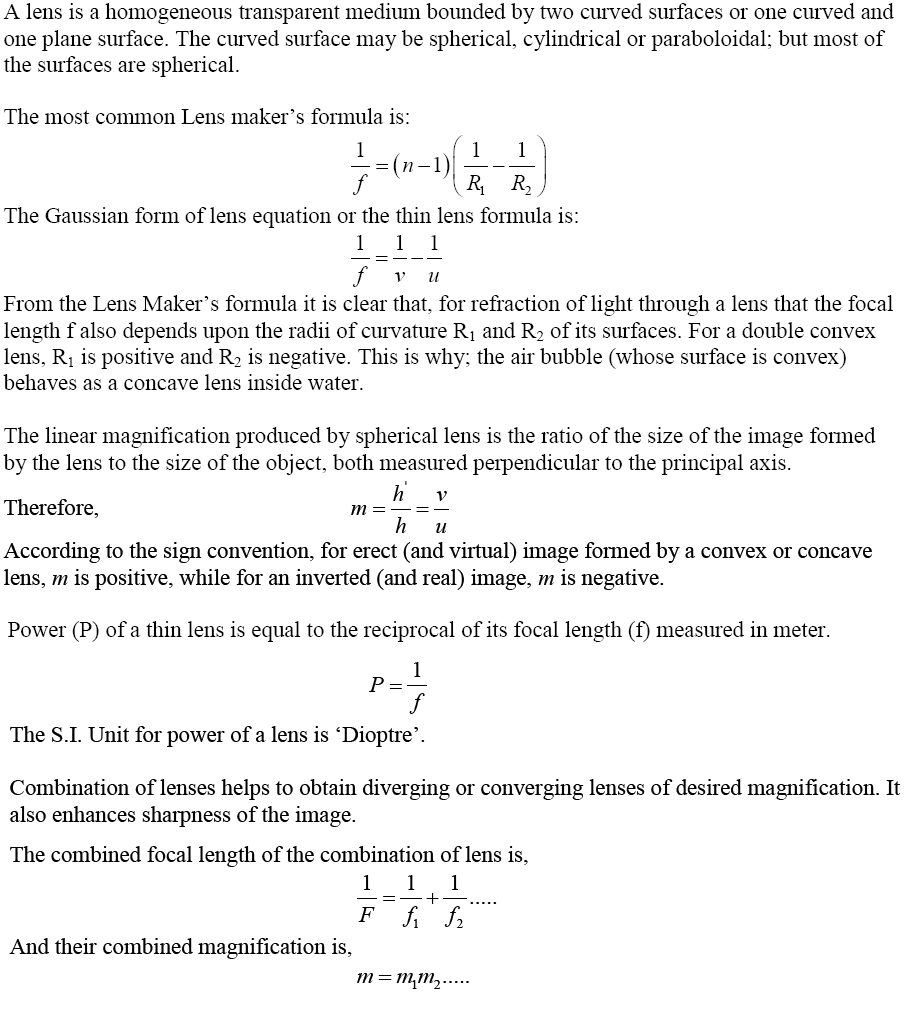
Refraction through Prism
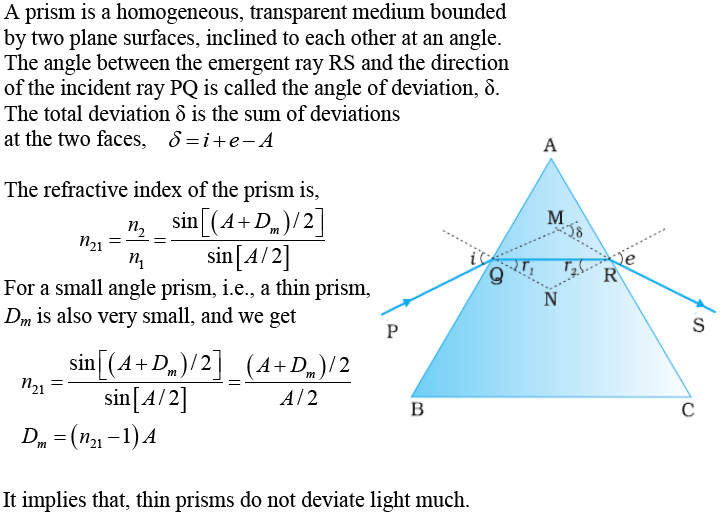
Dispersion of White Light

Some Natural Phenomenon due to Sunlight
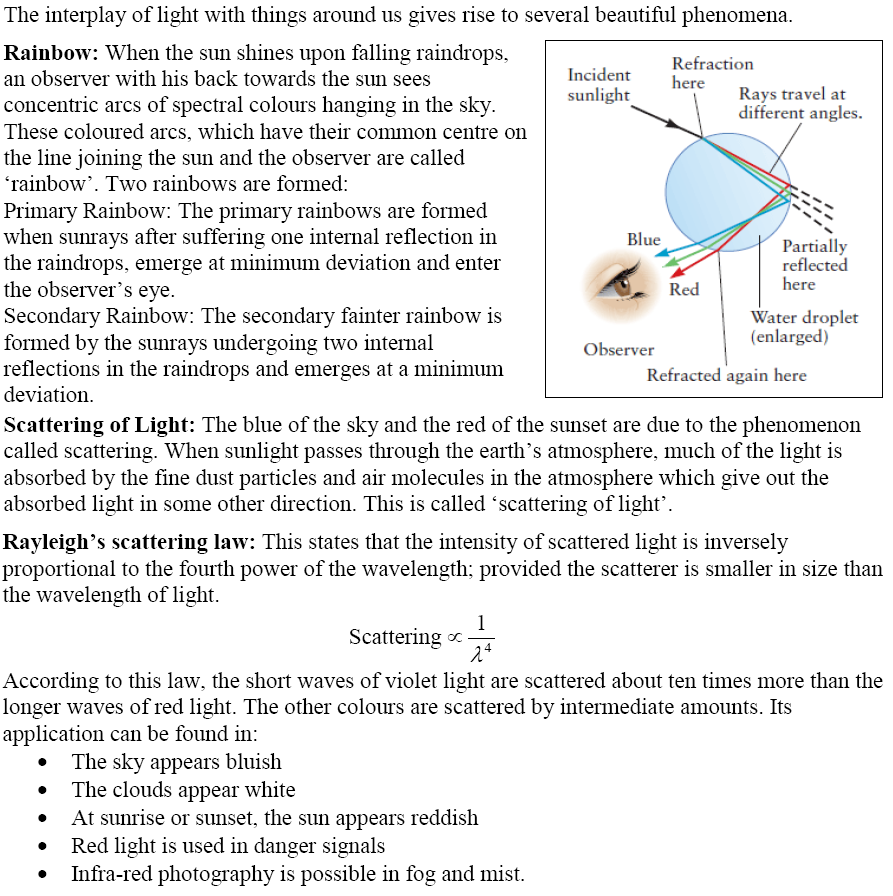
The Eye & Defects of Vision
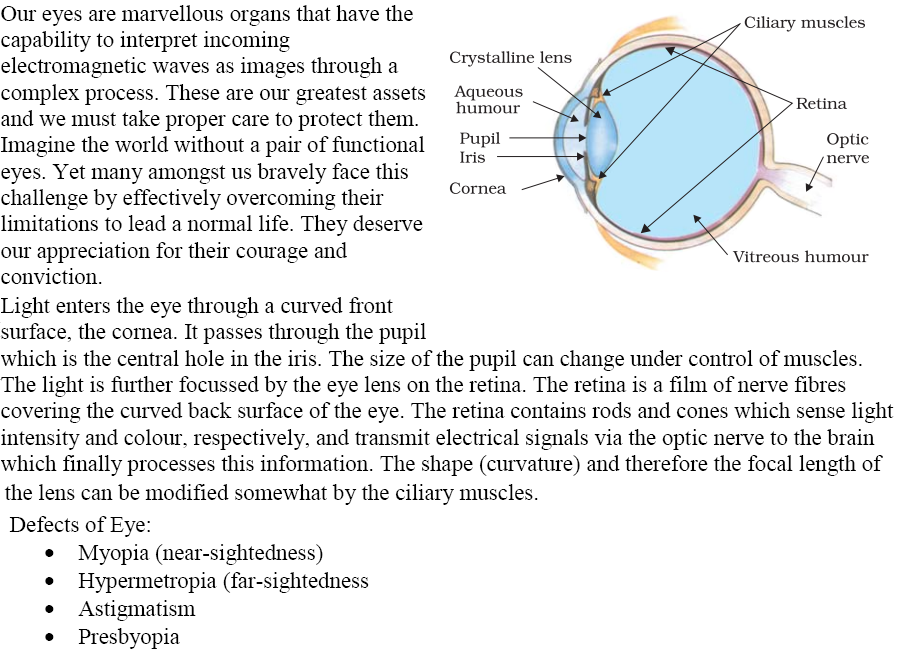
Simple Microscope
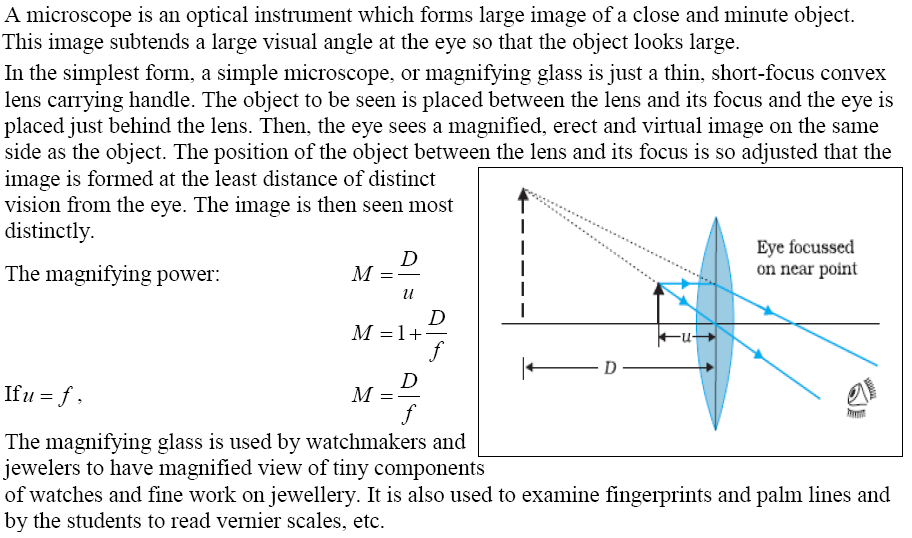
Compound Microscope

Astronomical Telescope
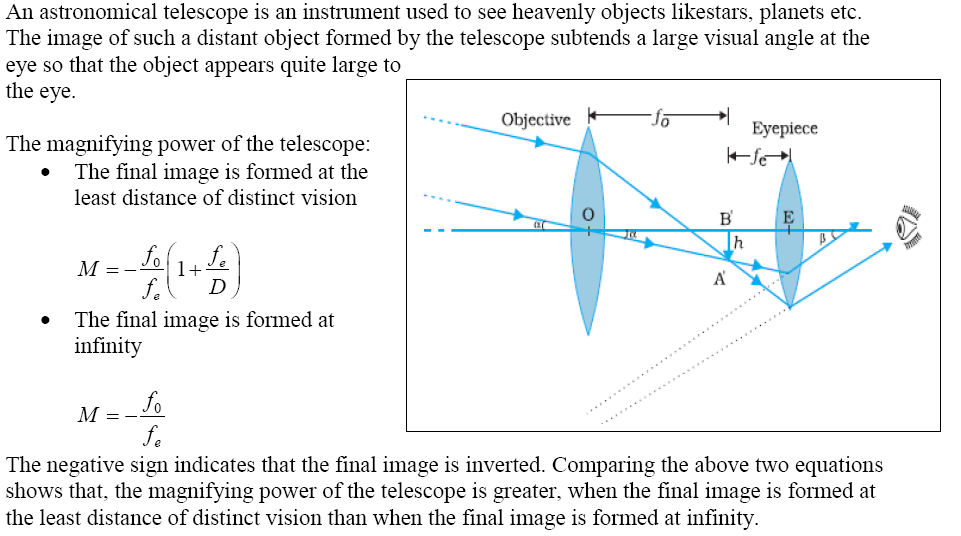
CBSE Class 12 Physics Important Questions Chapter 9 – Ray Optics and Optical Instruments
1 Mark Questions
1. A person is standing before a concave mirror cannot see his image, unless he is beyond the centre of curvature? Why?
Ans. When man stands beyond focus is i.e. between focus and centre of curvature, his real and inverted image is formed beyond C is beyond him and thus he cannot see the image. But when he stands beyond C, image is formed between focus and centre of curvature is in front of him and thus he is able to see his image.
2. For what angle of incidence, the lateral shift produced by a parallel sided glass plate is maximum?
Ans. We know



D =t
Lateral shift is maximum
3. You read a newspaper, because of the light if reflects. Then why do you not see even a faint image of yourself in the newspaper?
Ans. The image is produced due to regular reflection of light but when we read a newspaper, because of diffused (irregular) reflection of light we are not able to see even a faint image.
4. A substance has critical angle of  for yellow light what is its refractive index?
for yellow light what is its refractive index?
Ans.


5. An object is placed between the pole and focus of a concave mirror produces a virtual and enlarged image. Justify using mirror formula?
Ans. 

For a concave mirror

Given V < f so  is positive, hence image is virtual.
is positive, hence image is virtual.
Now magnification 

 Hence enlarged image is produce
Hence enlarged image is produce
6. A converging and diverging lens of equal focal lengths are placed coaxially in contact. Find the focal length and power of the combination?
Ans. 
For converging lens 
For diverging lens 






P=0
Hence
7. The refractive index of a material of a convex lens is n1 it is immersed in a medium of refractive index  . A parallel beam of light is incident on thelens. Trace the path of the emergent rays when
. A parallel beam of light is incident on thelens. Trace the path of the emergent rays when  .
.
Ans. When  then the convex lens behaves as a concave
then the convex lens behaves as a concave
8. In a telescope the focal length of the objective and the eye piece are 60cm and 5cm respectively. What is? (1) Its magnification power (2) Tube length
Ans. magnification 

Tube length 
9. Show the variation of u and  in case of a convex mirror?
in case of a convex mirror?
Ans.
10. Two lenses having focal length  are placed coaxially at a distance x from each other. What is the focal length of the combination?
are placed coaxially at a distance x from each other. What is the focal length of the combination?
Ans.  :
:
11. Does short-sightedness (myopia) or long-sightedness (hypermetropia) imply necessarily that the eye has partially lost its ability of accommodation? If not, what might cause these defects of vision?
Ans. A myopic or hypermetropic person can also possess the normal ability of accommodation of the eye-lens. Myopia occurs when the eye-balls get elongated from front to back. Hypermetropia occurs when the eye-balls get shortened. When the eye-lens loses its ability of accommodation, the defect is called presbyopia.
